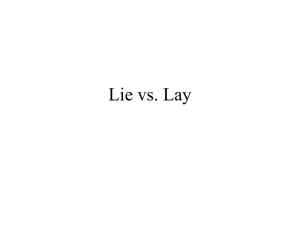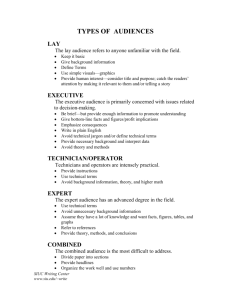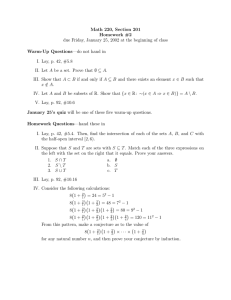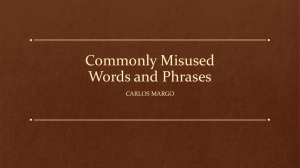Verb Chart NEW
advertisement
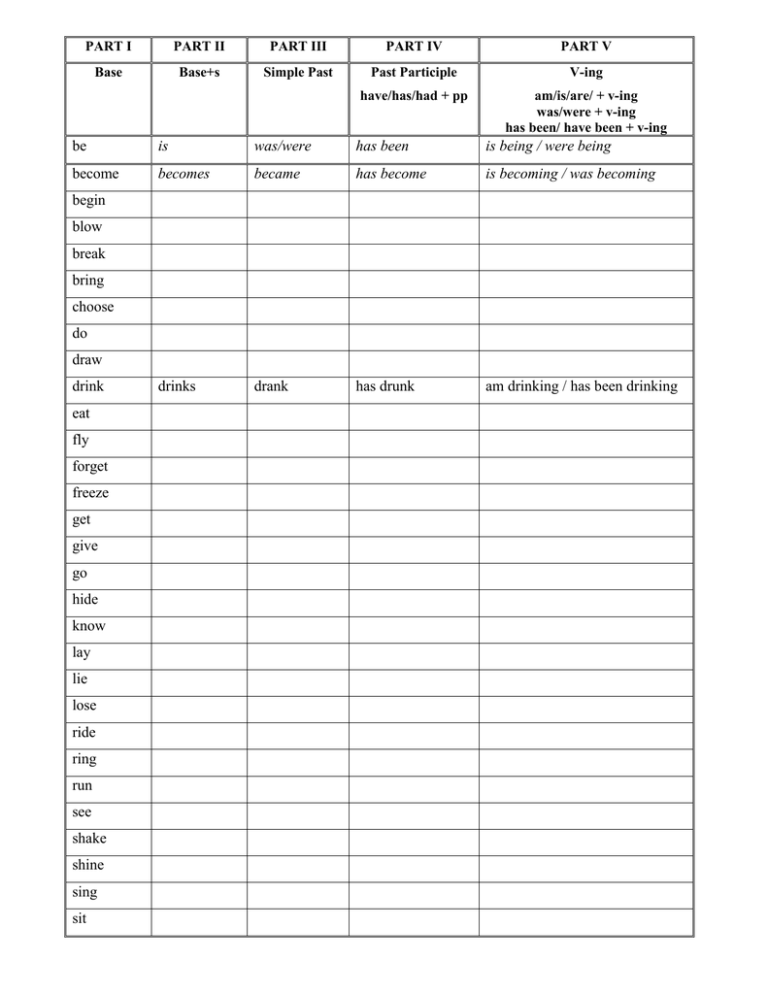
PART I PART II PART III PART IV PART V Base Base+s Simple Past Past Participle V-ing have/has/had + pp am/is/are/ + v-ing was/were + v-ing has been/ have been + v-ing be is was/were has been is being / were being become becomes became has become is becoming / was becoming drinks drank has drunk am drinking / has been drinking begin blow break bring choose do draw drink eat fly forget freeze get give go hide know lay lie lose ride ring run see shake shine sing sit PART I PART II PART III PART IV PART V Base Base+s Simple Past Past Participle V-ing have/has/had + pp am/is/are/ + v-ing was/were + v-ing has been/ have been + v-ing steal swim teach tell throw wear wind write Lay Lay and lie are both present-tense verbs, but they don’t mean quite the same thing. Lay means to put or set something down, so if the subject is acting on an object, it’s “lay.” For example, I lay down the book. You, the subject, set down the book, the object. Lie Lie, on the other hand, is defined as, “to be, to stay or to assume rest in a horizontal position,” so the subject is the one doing the lying—I lie down to sleep or When I pick up a copy of my favorite magazine, Writer’s Digest, I lie down to take in all its great information—and not acting on an object. In both these cases, you, the subject, are setting yourself down. Are you with me so far? I Lie Down vs. Now I Lay Me Down (to Sleep) To clarify things further, I’ll answer this question that you’re probably wondering: How can you be lying down in your examples while the classic nighttime prayer for kids clearly begins “Now I lay me down to sleep”? You must be out of your mind! It’s true, I’m totally out of my mind, but both the examples I used and the kids’ prayer are correct—and here’s why. In I lie down to sleep, there is no object to the sentence, just subject (I). In Now I lay me down to sleep, there is a subject (I) and an object (me). Even though the subject and object are one and the same, the object is still present in the sentence, so you must use lay. Laid vs. Lay vs. Lain Remember: Lay and laid both mean to set something down, while lie, lay and lain all mean the subject is setting itself down.

